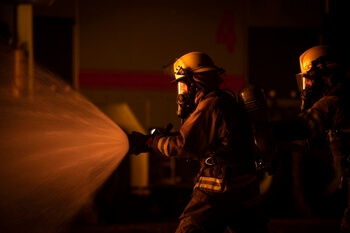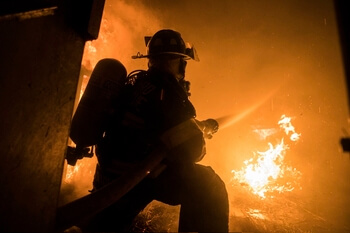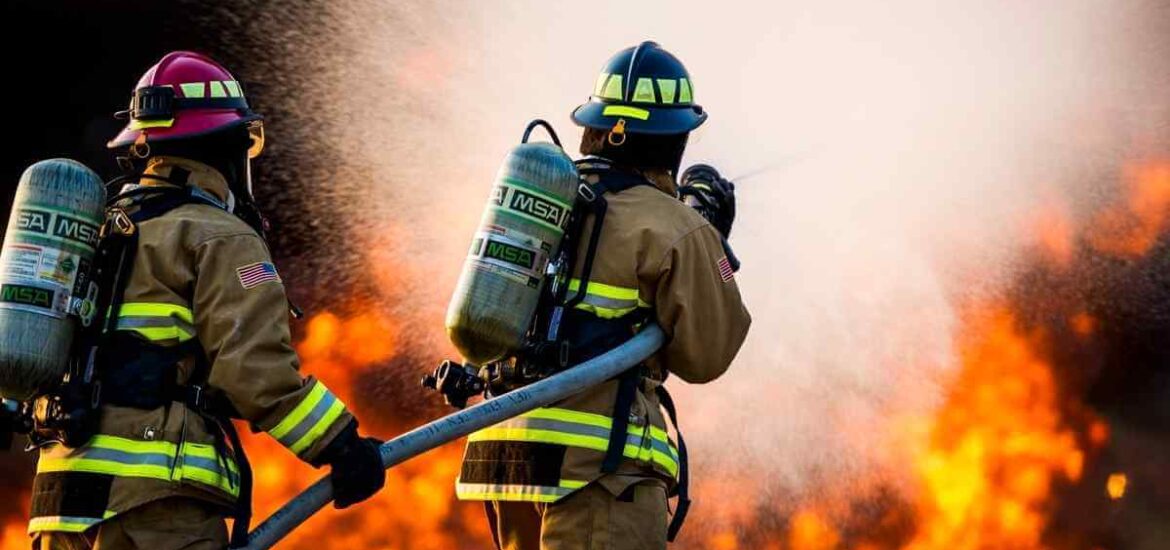The path to becoming a firefighter is a journey that requires dedication, resilience, and a strong sense of community service. Firefighters are first responders who risk their lives to save others and protect communities from fires and emergencies. In this comprehensive guide, we will explore the steps and training required to become a firefighter, from education and physical fitness to the rigorous training academy and continuous professional development.
The Road to Becoming a Firefighter
Becoming a firefighter is not just a career choice; it’s a calling driven by the desire to serve and protect. The journey to becoming a firefighter can be summarized in several key steps:
- Education and Prerequisites:
- A high school diploma or GED is typically the minimum educational requirement. Some fire departments may require a college degree or specific coursework in fire science or related fields.
- Meeting specific age requirements (usually between 18 and 21) is essential.
- Many fire departments require applicants to hold a valid driver’s license.
- Physical Fitness and Health:

- Firefighters must be physically fit, as the job demands strength, endurance, and agility. Many applicants need to pass a rigorous physical fitness test to be considered.
- A thorough medical examination is often part of the application process to ensure candidates are in good health.
- Emergency Medical Technician (EMT) Certification:
- Most fire departments require EMT certification, as responding to medical emergencies is a significant part of a firefighter’s job.
- Completing an EMT program and passing the certification exam is necessary for many applicants.
- Passing the Firefighter Exam:
- Applicants are required to take a written exam to assess their knowledge of firefighting techniques, safety procedures, and problem-solving abilities.
- A comprehensive background check and interview process are also common steps.
- Firefighter Training Academy:
- Once accepted into a fire department, candidates enter a training academy. This rigorous program typically lasts several months and covers essential firefighting skills and knowledge.
- Training includes hands-on exercises, live-fire drills, and classroom instruction.
- Obtaining Firefighter Certification:
- Successful completion of the training academy often leads to certification as a firefighter.
- Firefighter certification may be obtained through state or national certification agencies.
- Probationary Period:
- New firefighters often go through a probationary period during which their skills and performance are assessed on the job.
- During this period, they work under the guidance of experienced firefighters.
- Specialized Training:
- Firefighters may pursue specialized training, such as hazardous materials response, technical rescue, or wildland firefighting, to expand their skills and knowledge.
Training and Education for Firefighters
- Fire Science Education:
- Some aspiring firefighters choose to pursue a formal education in fire science, which can range from certificate programs to bachelor’s degrees.
- Fire science programs cover topics like fire behavior, fire prevention, emergency management, and firefighting techniques.
- Firefighter 1 and Firefighter 2 Certification:
- Firefighter 1 and Firefighter 2 certifications are typically required for employment as a firefighter.
- These certifications are often offered through state or national agencies, and the curriculum includes both classroom and practical training.
- Emergency Medical Technician (EMT) Certification:
- EMT certification is a crucial component of firefighter training, as firefighters often serve as first responders in medical emergencies.
- EMT programs typically cover patient assessment, basic life support, and emergency medical procedures.
- Physical Fitness Training:
- Maintaining excellent physical fitness is essential for firefighters. Many fire departments have physical fitness standards that candidates must meet.
- Fitness training may include strength training, cardiovascular conditioning, and agility drills.
- Live-Fire Training:
- Firefighter training includes hands-on experience with live-fire exercises. Trainees learn to handle firefighting equipment, suppress fires, and conduct search and rescue operations.
- Specialized Training:
- Some firefighters choose to specialize in areas such as hazardous materials response, technical rescue, or wildland firefighting.
- Specialized training equips firefighters to handle specific types of emergencies.
The Role of the Firefighter Training Academy
Firefighter training academies are the heart of firefighter education and preparation. These academies provide a comprehensive and immersive learning experience, combining classroom instruction with hands-on training. Here’s what trainees can expect at the academy:
- Classroom Learning:
- Trainees attend classes covering a wide range of firefighting topics, including fire behavior, safety procedures, incident command, and emergency medical procedures.
- Live-Fire Drills:
- Firefighters learn to combat fires by participating in live-fire drills, where they extinguish controlled fires using various firefighting equipment and techniques.
- Physical Fitness Training:
- Fitness is a crucial aspect of firefighter training, and academies often include daily physical fitness sessions to build strength, endurance, and agility.
- Rescue Scenarios:
- Trainees practice rescue scenarios, which may involve extracting victims from vehicles, buildings, or confined spaces.
- Simulation Training:
- Simulated exercises prepare firefighters for real-life situations, such as responding to vehicle accidents, hazardous materials incidents, and wildland fires.
- Teamwork and Communication:
- Firefighter training emphasizes the importance of teamwork and effective communication during emergency responses.
 The Probationary Period
The Probationary Period
Upon completing fire fighter training, new firefighters often enter a probationary period, during which they work alongside experienced firefighters to gain practical experience.
This phase serves as an opportunity to apply the knowledge and skills acquired during training in real-world situations.
Probationary firefighters are closely supervised and evaluated to ensure they meet the department’s standards.
Ongoing Professional Development
Becoming a firefighter is just the beginning of a lifelong journey of professional growth. Firefighters are expected to continue their education and training throughout their careers. Here are some aspects of ongoing professional development:
- Advanced Training:
- Firefighters may pursue advanced training and certifications, such as becoming a paramedic or earning a Fire Officer designation.
- Continual Fitness Maintenance:
- Maintaining physical fitness is essential for the duration of a firefighter’s career, and many departments require regular fitness assessments.
- Safety and Rescue Techniques:
- Firefighters stay updated on the latest safety procedures, equipment, and rescue techniques to ensure their effectiveness in emergencies.
- Specialization:
- Some firefighters choose to specialize in areas like arson investigation, hazardous materials, or technical rescue.
- Community Engagement:
- Engaging with the community through fire prevention programs and public education initiatives is a vital part of a firefighter’s role.
Conclusion
Becoming a firefighter is a challenging but rewarding journey that starts with education, physical fitness, and rigorous training. The path includes fulfilling educational requirements, gaining practical experience in a training academy, and successfully completing a probationary period. Firefighters are committed to ongoing professional development and continuously improving their skills to serve their communities and respond to emergencies effectively. For those who are drawn to a career in service, the role of a firefighter offers a unique opportunity to make a significant impact on the safety and well-being of others.

